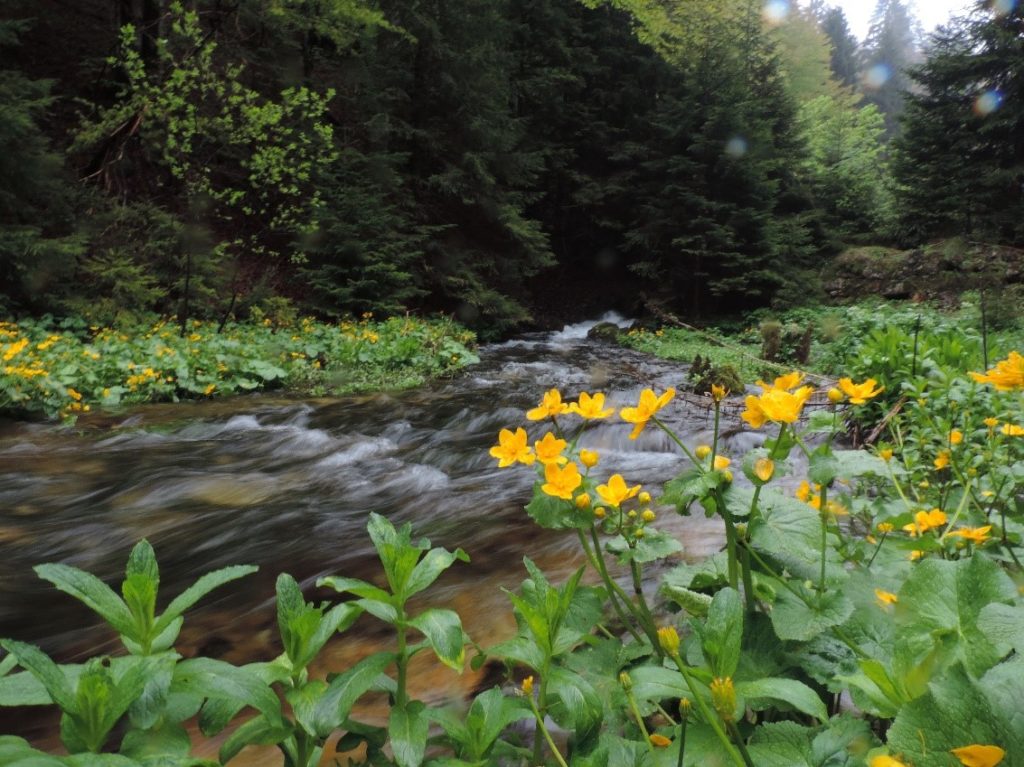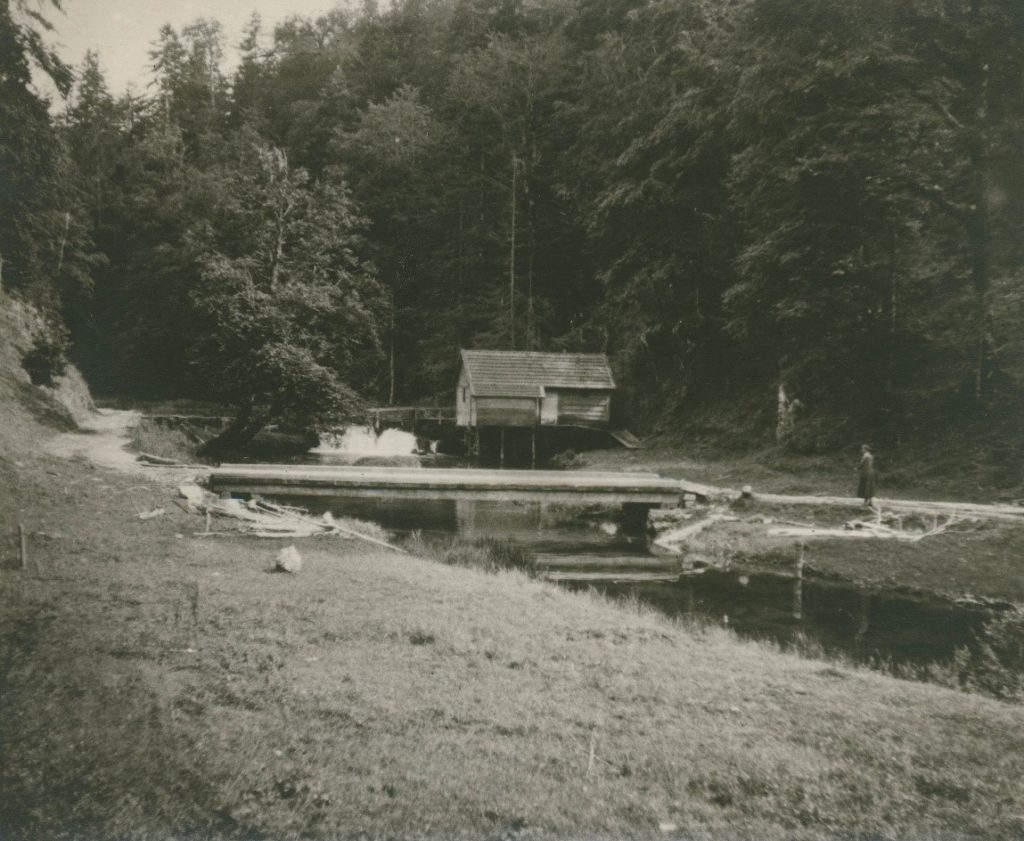The legend of the Black Queen describes the creation of the White River and the Black River, i.e. the creation of the sources of these rivers: “My tears will pour out in streams: my right eye for the black source of the Black River, and my left eye for the white source of the White River.” Putting the story aside, we owe the existence of the sources of these small karst rivers above all to the geological substrate of the area, since karst springs are formed at the places of faults, i.e. the contact of permeable and impermeable layers. The sources of the White River and the Black River are located in the area dominated by permeable rocks from the Jurassic period.
The White River springs from several smaller sources through the substrate made of gravel and sand and covered with rocks, which then merge into one stream.

The stream soon becomes surprisingly deep, which is not usual for a source stream, its depth exceeding 1 m. The reason for this change in depth is the existence of a dam almost 100 m downstream from the source. Also, the bottom at the part of the river before it reaches the dam is covered with fine white calcite sand, and there is the answer to the question how the White River got its name – precisely because of this calcite sand. It is also interesting to mention that on the left side of the stream, looking downstream, another smaller spring opens that is not covered with rocks, but with completely white sand. There, the water that is coming out creates bubbles that slowly lift the sand before flowing away freely.

Downstream from the artificial dam, the stream of the White River is shallow, fast and turbulent, with lots of pebbles. Further on its way towards the settlement of Plitvički Ljeskovac, the White River meanders, changing its depth and flow, and its bottom becomes increasingly covered with sand.

In the past, human impact on this watercourse was significant, with a lot of damming, creation of reservoirs, diversion of the stream and the like, all of which significantly affected the current appearance of the watercourse. In the source area of the river, the most common plant species are the creeping marshwort (Apium repens), the marsh-marigold (Caltha palustris) and the European speedwell (Veronica beccabunga). This interesting watercourse is in its downstream part also the habitat of a species new to the Republic of Croatia, the macroalga Hydrurus foetidus, which is normally a characteristic inhabitant of cold and clean mountain rivers.

The spring of the Black River is located under the high cliffs at the foot of the Kik mountain, at 670 m above sea level, deep in the forest, surrounded by beeches, spruces and firs. The substrate at the spring itself is made up of larger boulders, rocks densely covered with moss. When the water levels are high, and especially after the snow melts, the spring moves a few meters upstream. Unfortunately, we notice that in the last 10 years this happens extremely rarely. After leaving the spring, the stream passes through a notch and becomes turbulent and fast.

On its way downstream, it widens, meanders, becomes shallower then deeper again, while the substrate alternates between stony, gravelly and even sandy. In many places, the stream is intersected by various trees brought down over the Black River after the end of their lifetime or due to adverse weather conditions.
About 2 km downstream from the spring, just before the bridge, a mill found its place at some point in the past, probably at the end of the 19th century.

Given that the Black River flows through a completely uninhabited and almost untouched forest area for its whole length, its entire stream is significantly shaded, which also affects the development of plant and animal species in the river. Surely that’s where the name Black River comes from. At the same time, in the watercourse itself there are mosses that like the shade, namely Palustriella commutata, a moss species important for the lake area too, because it participates in the tufa formation process, i.e. in the formation and growth of tufa barriers. In addition to this moss species, there are also animals who found their habitat in the Black River – namely a species of crustaceans, Rivulogammarus, belonging to the order of crustaceans smaller than 10 mm (Amphipoda), and beetles of the genus Riolus. Of course, in addition to these organisms, the Black River is a habitat of numerous representatives of freshwater fauna such as mayflies (Ephemeroptera), caddisflies (Trichoptera), stoneflies (Plecoptera) and flies (Diptera).
At the end, let us point out that the names of these rivers are fully justified; the White River owes its name to the specific sandy substrate of its source and parts of its watercourse, and the Black River to the wooded area it flows through and the mosses that cover its bottom. However, if we were to reveal that the White River had a completely different name on the maps from the 19th century (Vrbovska River, “vrba” meaning “willow” in Croatian), this would certainly create space for a new story!



